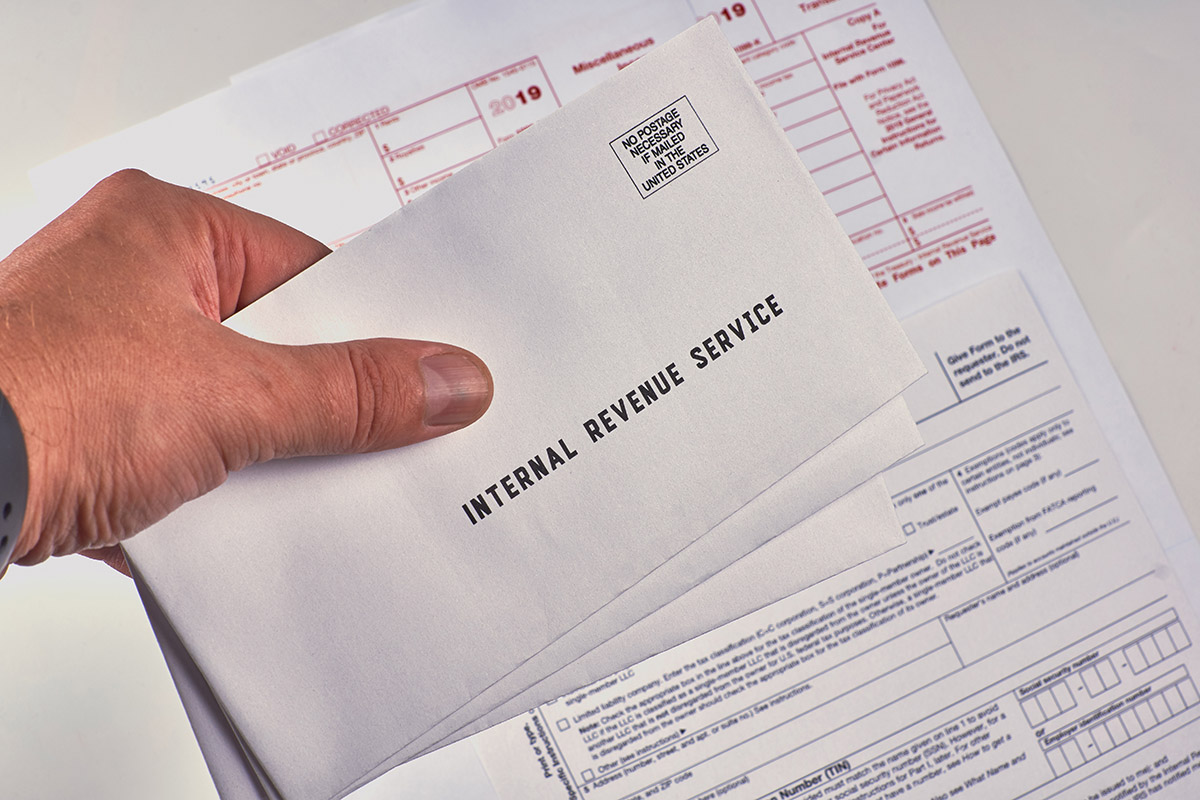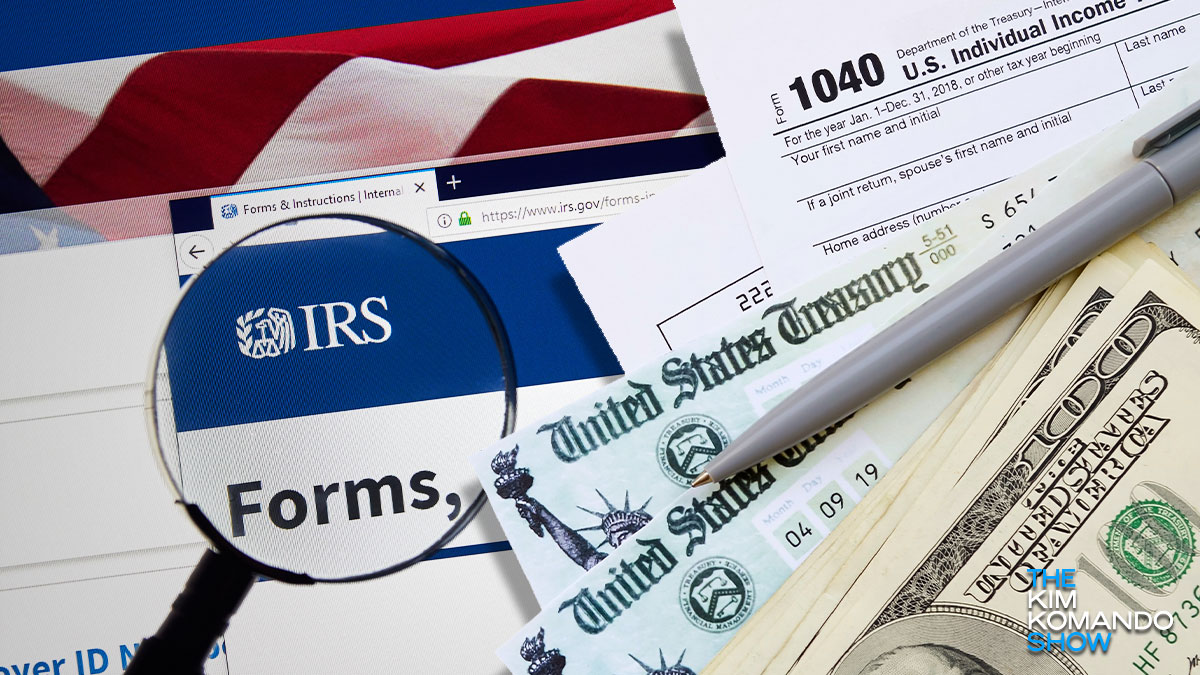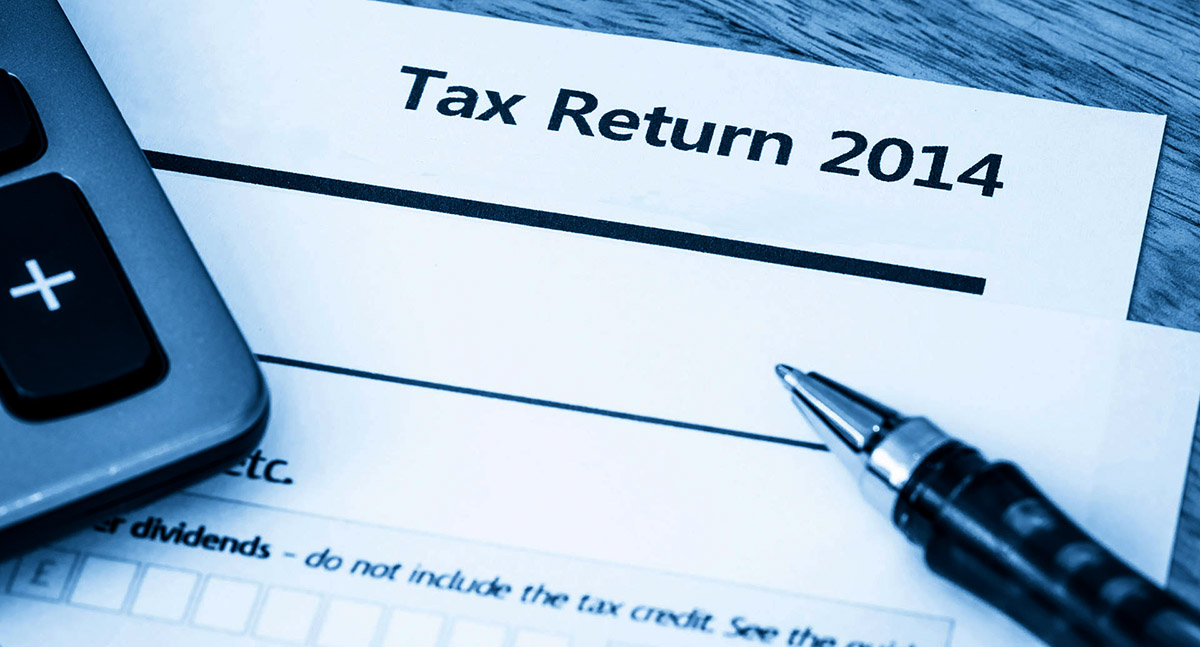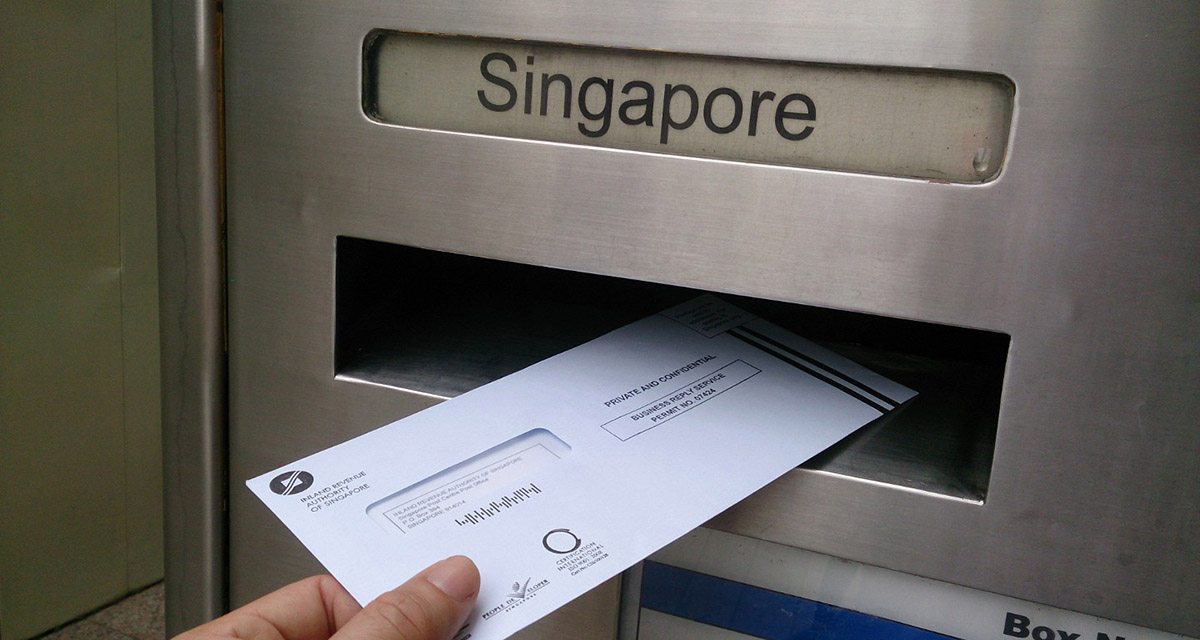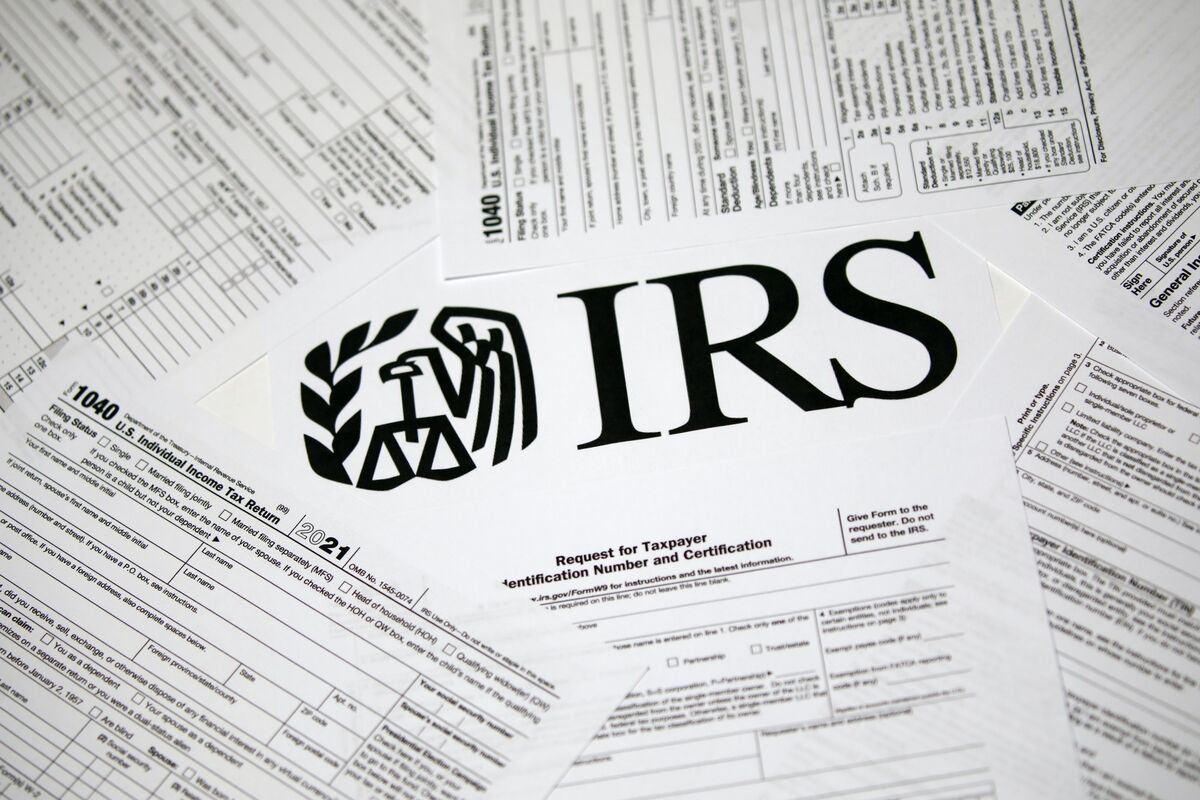

Finance
Where To Sign A Tax Return
Modified: February 21, 2024
Looking for where to sign a tax return in the world of finance? Find out the best locations and steps to complete the process easily.
(Many of the links in this article redirect to a specific reviewed product. Your purchase of these products through affiliate links helps to generate commission for LiveWell, at no extra cost. Learn more)
Table of Contents
Introduction
Welcome to the world of tax returns! Whether you’re a seasoned taxpayer or filing for the first time, one important aspect of the process is signing your tax return. Signing your tax return is crucial as it signifies that you have reviewed the information and that it is accurate and complete to the best of your knowledge. In this article, we will explore the significance of signing a tax return and provide guidance on where to sign, whether you are filing a paper or electronic return.
From simple individuals to complex businesses, tax returns are a necessary part of managing your finances. They serve as a way to report your income, claim deductions and credits, and ultimately determine your tax liability. However, the act of signing a tax return holds more weight than simply acknowledging and accepting the information within. It is a legally binding declaration that holds you accountable for the accuracy of the return.
Not only does signing a tax return give your seal of approval, it serves as a safeguard against fraud. By attaching your signature, you are affirming that you have provided truthful and reliable information to the tax authorities. This plays a crucial role in maintaining the integrity of the tax system and ensuring that individuals and businesses fulfill their obligations.
Now that we understand the significance of signing a tax return, let’s explore where you should place your signature, depending on whether you are filing a paper tax return or an electronic tax return. It’s important to follow the proper protocols and guidelines to ensure your tax return is valid and compliant with tax regulations.
Understanding the Significance of Signing a Tax Return
When you sign your tax return, you are acknowledging that the information provided is accurate, complete, and truthful. This is more than just a procedural step – it holds legal and ethical implications. By signing your tax return, you become legally responsible for the contents of the return, making it imperative to ensure the accuracy of the information reported.
Signing a tax return serves as a declaration under penalty of perjury. This means that you are attesting, under the threat of criminal prosecution, that the information you have provided is true and correct to the best of your knowledge. It is essential to take this responsibility seriously, as any false information or deliberate attempt to deceive the tax authorities can result in severe penalties, including fines and even imprisonment.
In addition to the legal implications, signing a tax return also plays a vital role in maintaining the overall integrity of the tax system. By signing, you are acting as a gatekeeper, ensuring that accurate records are submitted to the tax authorities. This helps to prevent fraud and tax evasion, ultimately contributing to a fair and transparent tax system for all taxpayers.
It is important to note that even if you engage the services of a tax professional to prepare your return, you are still responsible for reviewing and signing the return. This underscores the importance of selecting a reputable and qualified professional who can provide accurate and reliable tax advice and ensure compliance with tax laws.
While signing a tax return is a legal requirement, it is not the end of your responsibilities. You should retain a copy of the signed return and any supporting documentation for a specified period, typically three to seven years, depending on your jurisdiction. This will enable you to respond to any inquiries or audits by the tax authorities effectively.
In the next sections, we’ll dive into specific instructions on where to sign your tax return, depending on whether you are filing a paper return or an electronic return.
Where to Sign a Paper Tax Return
When filing a paper tax return, it is essential to know exactly where to place your signature. The signature serves as your authentication and binds you to the information provided on the return. Below are the specific locations where you should sign a paper tax return:
- Form 1040: If you are filing an individual tax return using Form 1040, you will find the signature line on the second page of the form, right above the “Paid Preparer Use Only” box. Sign and date the return in the spaces provided.
- Form 1040A: For those using Form 1040A, the signature line can be found on the second page as well, above the “Paid Preparer Use Only” box. Sign and date in the designated spaces.
- Form 1040EZ: If you qualify to file using the simplified Form 1040EZ, the signature line is located on the second page, just above the “Paid Preparer Use Only” box. Be sure to sign and date the return properly.
- Business and other forms: If you are filing other tax forms, such as Schedule C for business income or Schedule A for itemized deductions, you will typically find the signature line on the last page of the specific form. Follow the instructions provided to sign and date the return accordingly.
When signing a paper tax return, it is advisable to use a pen with blue or black ink to ensure legibility. Avoid using pencil or any other color ink, as they may not be accepted by the tax authorities.
It’s worth mentioning that if you are filing a joint tax return with your spouse, both of you must sign the return. If one spouse is unable to sign due to being away or incapacitated, there are provisions for a power of attorney or an authorized representative to sign on their behalf. Consult with a tax professional or refer to the instructions provided by the IRS or your country’s tax authority for guidance on signing a joint return in special circumstances.
Remember, signing a paper tax return is a critical step in the filing process. Failure to sign the return properly can result in the rejection of your submission, delays in processing, and potential penalties. Take the time to carefully review the instructions and ensure that your signature is placed in the correct location to avoid any complications.
Where to Sign an Electronic Tax Return
With the advent of technology, many taxpayers now opt to file their tax returns electronically. Electronic filing offers convenience, efficiency, and faster processing times. But how does one sign an electronic tax return? Let’s explore the specific guidelines:
Personal Identification Number (PIN): When electronically filing your tax return, you are required to sign it using a Personal Identification Number (PIN). This serves as a digital signature and replaces the traditional pen-and-ink signature on a paper return. The IRS or your country’s tax authority will provide you with options to create a PIN or a unique electronic signature.
Self-selected PIN: Most electronic filing software will allow you to create your own PIN. This is typically a five-digit number that you select, and it serves as your digital signature. Follow the instructions provided by the tax authorities or the electronic filing software to create a secure and memorable PIN.
Electronic filing PIN: In some cases, instead of a self-selected PIN, the tax authorities may issue an Electronic Filing PIN to you. The PIN will be sent to you after verifying your identity using information from your previous tax returns or other personally identifiable information. This PIN will be used to sign your electronic tax return.
When electronically filing a joint tax return, both spouses will need to sign using their individual PINs. It is important to note that each taxpayer needs to use their own PIN and not share or use the same PIN. This ensures that both taxpayers take personal responsibility for their respective portions of the return.
Once you have obtained or created the required PIN, simply follow the prompts provided by the electronic filing software. The software will guide you to the appropriate section of the return where you can enter your PIN and complete the signing process. Be sure to double-check the entered PIN to ensure accuracy.
As with paper tax returns, it is essential to review the electronic return thoroughly before signing. Carefully check all the information, including your personal details, income, deductions, and credits, to ensure accuracy and completeness.
Keep in mind that when filing electronically, you may be required to complete additional steps to verify your identity. This may include entering information from your prior year’s tax return or providing other personal information to ensure the security and integrity of the electronic filing process.
By signing your electronic tax return with a secure and unique PIN, you are certifying that the information is accurate, complete, and true to the best of your knowledge. Remember to keep a copy of your electronically filed return for your records, including any electronic confirmation or acknowledgment provided by the tax authorities.
Now that you know where to sign your electronic tax return, you can confidently embrace the benefits of electronic filing, knowing that your digital signature validates the accuracy and completeness of your return.
Signing a Joint Tax Return
When filing a joint tax return with your spouse, both of you must sign the return to indicate your agreement and acceptance of the information provided. The rules for signing a joint tax return may vary depending on whether you are filing a paper return or an electronic return. Let’s delve into the specifics:
Paper Tax Return: On a paper tax return, both spouses should sign their names and date the return in the designated spaces. It is important to follow the instructions provided on the tax form to ensure that the signatures are placed correctly. Failing to sign the return or missing a signature can result in rejection or delays in processing.
Electronic Tax Return: When filing an electronic tax return, both spouses will need to have their own Personal Identification Numbers (PINs). Each spouse should sign the return using their individual PIN. It is crucial to avoid sharing or using the same PIN, as this could lead to complications and potential penalties. Follow the instructions provided by the tax authorities or the electronic filing software to enter the PINs and complete the signing process.
It is important to note that both spouses are equally responsible for the accuracy and completeness of the information provided on the joint tax return. This includes reporting income, deductions, credits, and any other relevant information. Both spouses should review the return together to ensure that everything is correct before signing.
In some cases, one spouse may be unable to sign the return due to various reasons, such as being abroad or incapacitated. In such situations, there are provisions for a power of attorney or an authorized representative to sign on their behalf. It is advisable to consult with a tax professional or refer to the official guidelines provided by the tax authorities to determine the proper procedures for signing a joint return in special circumstances.
Remember, signing a joint tax return signifies that both spouses have reviewed the information and agree to its accuracy. It is crucial to take the time to carefully review the return, ask any questions, and seek professional advice if needed. By fulfilling your obligation to sign the joint tax return, you are demonstrating your commitment to fulfilling your tax responsibilities as a married couple.
Signing a Tax Return on Behalf of Another Person
There may be situations where you are authorized to sign a tax return on behalf of another person. This can occur when acting as a legal representative or guardian for someone who is unable to sign the return themselves. However, it is important to follow the appropriate protocols to ensure compliance with tax regulations. Here’s what you need to know:
Power of Attorney (POA): If you have been granted power of attorney by the taxpayer, you have the legal authority to sign the tax return on their behalf. A power of attorney is a legal document that authorizes you to act as the taxpayer’s representative in tax matters. It is crucial to have a valid and up-to-date power of attorney in place before signing the tax return.
Form 2848: In the United States, the taxpayer can use Form 2848, Power of Attorney and Declaration of Representative, to designate you as their representative. This form must be completed and filed with the IRS before you can sign the tax return on their behalf.
Authorized Representative: In some cases, you may be appointed by a court or have legal guardianship over an individual who is incapable of signing their tax return due to age, mental impairment, or other reasons. In such situations, you may be allowed to sign the tax return on their behalf. However, it is important to consult with legal authorities or tax professionals to ensure compliance with local laws and regulations.
When signing a tax return on behalf of another person, it is essential to clearly indicate your relationship to the taxpayer and your authority to sign. This can be done by including your title (e.g., Power of Attorney, Legal Guardian) and signing your own name followed by the phrase “by [your name], as [title].” This helps ensure transparency and avoids any confusion about the validity of the signature.
It is important to note that signing a tax return on behalf of another person is a responsibility that should be taken seriously. You have the legal obligation to accurately and honestly represent the taxpayer’s financial information. This includes reporting their income, deductions, and credits to the best of your knowledge.
Additionally, you should keep detailed records and documentation to support the information reported on the tax return. This is crucial in the event of an audit or any inquiries from tax authorities.
Remember, signing a tax return on behalf of another person requires due diligence and adherence to legal procedures. It is always best to consult with tax professionals or legal experts to ensure that you are following the proper protocols and fulfilling your responsibilities as a representative. By doing so, you can navigate the process with confidence and peace of mind.
Consequences of Not Signing a Tax Return
Signing a tax return is not just a formality – it carries legal and financial implications. Failing to sign a tax return can result in various consequences, ranging from simple processing delays to more severe penalties. Let’s explore the potential repercussions of not signing your tax return:
Rejected Tax Return: In most cases, if you fail to sign your tax return, whether it is a paper return or an electronic return, it will be considered incomplete. Tax authorities typically require a valid signature to process a return. As a result, your return may be rejected or not processed until the required signature is provided.
Processing Delays: Not signing your tax return can lead to delays in the processing of your return. This can result in slow refunds or potentially missed deadlines for payment of any tax owed. It is essential to sign your return promptly to ensure that it is processed in a timely manner.
Fines and Penalties: In some jurisdictions, failing to sign a tax return can trigger penalties and fines. These penalties vary depending on the tax authority and the specific circumstances. Penalties may be imposed based on a fixed amount or calculated as a percentage of the tax owed. It is important to familiarize yourself with the penalties imposed by your specific tax authority to understand the potential financial consequences.
Loss of Deductions and Credits: Certain deductions and credits on your tax return may require your signature for them to be valid. If you fail to sign your return, you may lose the opportunity to claim these deductions and credits, resulting in a higher tax liability.
Increased Audit Risk: Failing to sign your tax return or providing an invalid signature may raise red flags with tax authorities. This could potentially increase the likelihood of your return being selected for an audit. An audit can be time-consuming, stressful, and may result in additional financial penalties if errors or discrepancies are found.
Criminal Charges: In cases of deliberate and intentional refusal to sign a tax return or provide accurate information, the consequences can be even more severe. Tax evasion and fraud are serious offenses that can result in criminal charges, including fines and imprisonment. It is crucial to take the signing of your tax return seriously and ensure that all information provided is accurate and truthful.
To avoid these consequences, it is important to carefully review your tax return, sign it using the appropriate method, and adhere to the instructions provided by the tax authorities. If you have any concerns or uncertainties, consult with a tax professional who can provide guidance and support throughout the process.
Remember, signing your tax return is a legal requirement and a responsibility that should not be taken lightly. By fulfilling this obligation, you can ensure compliance with tax regulations, protect yourself from penalties, and maintain the integrity of the tax system.
Conclusion
Signing your tax return is a critical step in the tax filing process. Whether you are filing a paper return or utilizing electronic filing methods, understanding the significance and the proper procedures for signing is essential. By signing, you affirm the accuracy and completeness of the information provided on your tax return.
Signing a tax return not only fulfills your legal obligations but also plays a crucial role in maintaining the integrity of the tax system. It helps prevent fraud and ensures that individuals and businesses are held accountable for the information they report to the tax authorities.
When filing a paper tax return, make sure to sign and date the form in the appropriate spaces. Follow the instructions provided by the tax authorities to ensure that your signature is placed correctly. If you are filing an electronic tax return, create a secure and unique personal identification number (PIN) to sign the return digitally. Also, remember to review the return carefully before signing to ensure accuracy.
For joint tax returns, both spouses must sign the return, either on paper or electronically. Ensure that each spouse signs using their own PIN or initials the paper return where required.
Signing a tax return on behalf of another person requires the appropriate legal authority and adherence to specific procedures. This includes having a valid power of attorney or designated representative status.
Failure to sign your tax return can lead to various consequences, such as rejection, processing delays, penalties, and increased audit risk. It is crucial to take signing your tax return seriously and fulfill this obligation to avoid complications and potential financial and legal repercussions.
By understanding the significance of signing a tax return and following the appropriate guidelines, you can confidently navigate the tax filing process and ensure compliance with tax laws. If you have any doubts or concerns, seek professional advice from a tax expert, who can provide further guidance based on your specific circumstances.
Remember, signing your tax return is not just a checkbox to complete – it is your declaration of accuracy and commitment to fulfilling your tax responsibilities.


